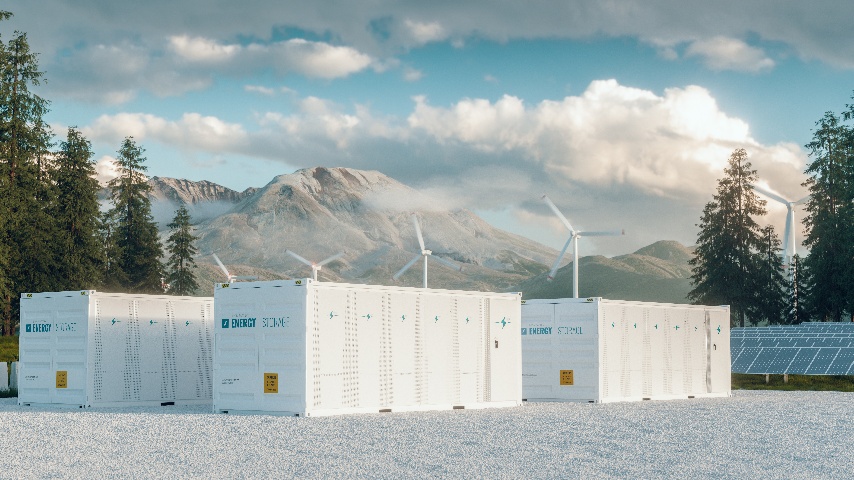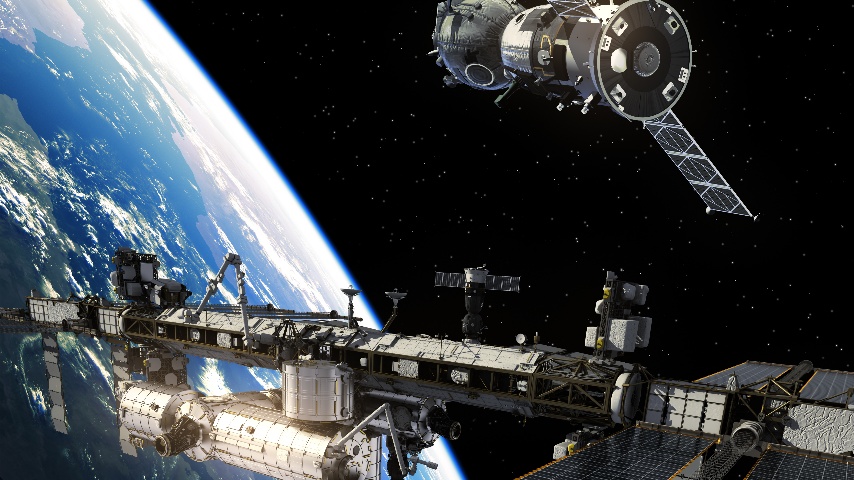In an era driven by technology, where the boundaries of exploration and operation are continuously expanded, pressure-sensing technology plays a vital role in extreme environments. Spanning a wide range of areas from the depths of the ocean to the vastness of space, it enables high-precision monitoring and control essential for ensuring the success and safety of these missions.
Deep in the ocean, pressure sensing technology not only monitors seismic activities, tsunamis, and marine ecological activities but also measures the pressure and temperature of the seabed in deep-sea exploration. This technology provides scientists with valuable data, helping them to decipher the environmental characteristics and resource distribution of the seabed.
In the vast expanse of space, pressure sensing technology is equally critical, enabling spacecraft to accurately perform attitude control and orbital adjustments under harsh conditions. For example, in Mars exploration missions, it can monitor pressure changes inside and outside the spacecraft and micrometeorite impacts, ensuring the safe and stable operation of the spacecraft.
This article delves into the challenges faced by pressure sensing technology in harsh conditions such as high temperatures, high pressures, extreme cold, and radiation, and how advanced technologies are utilized to overcome these challenges, while also looking forward to its practical applications and future possibilities. As technology advances, pressure sensing technology is expected to play a wider role in applications such as deep-sea exploration and Mars exploration in extreme environments, providing strong technical support for human exploration and the opening up of unknown territories.

Advancements in Pressure Sensing Technology
The development of pressure-sensing technology has always kept pace with the urgent need for applications in extreme conditions. Whether facing the harsh extraction environments of oil and gas or the high-temperature and high-pressure challenges of the aerospace industry, there is a great need for accurate and reliable pressure measurements under these extreme conditions. This demand has driven the rapid progress of sensor technology, leading to the development of a new generation of pressure sensors to meet more complex and demanding application requirements.
Meanwhile, innovations in material science have played a key role in the design and manufacturing of pressure sensors. New materials that are resistant to high temperatures, high pressures, and corrosion, including advanced ceramics, metal alloys, and polymers, have been widely applied in sensor manufacturing. These materials not only improve the performance of sensors in extreme environments but also significantly extend their lifespan.
Furthermore, advances in microfabrication technology have opened up new possibilities for manufacturing smaller, more accurate pressure sensors. Using microfabrication technology, sensors with tiny structures and complex functions can be produced, not only enhancing sensor sensitivity and stability but also enabling them to better meet a variety of complex measurement requirements.
These technological advancements have led to several major breakthroughs, including a significant expansion in the measurement range, with modern pressure sensors now capable of covering from very low vacuum levels to very high pressure levels. Thanks to progress in materials science and manufacturing processes, modern sensors have greatly improved in accuracy and reliability, providing more precise and stable measurement data. Lastly, the development of microfabrication technology has also led to a reduction in sensor size and cost, allowing pressure sensors to be used in a wider range of fields, thereby providing solid technical support for precise measurements in various complex environments.
Applications in Harsh Environments
Harsh environments pose extreme challenges to equipment and instruments, characterized by extreme temperatures (both high and low), immense pressures (from liquids, gases, or solids), corrosive media (such as acids, alkalis, salts, and other chemicals), harmful radiation (from the sun, nuclear energy, etc.), and intense shocks and vibrations (from mechanical movements or explosions). In such environments, pressure sensors face challenges including selecting materials that can withstand corrosion and wear, ensuring sensor sealing to prevent external media from entering, and maintaining their measurement accuracy and reliability under continuous harsh conditions.
In deep-sea exploration, pressure sensors are used for seabed pressure measurements to study topography, seismic activity, and tsunamis, monitor the behavior of marine life, and monitor the status of deep-sea mining equipment and pipelines. These applications require sensors to withstand extreme pressures and corrosive environments while providing accurate data.
The aerospace field also relies on pressure sensors to monitor the pressure and temperature of aircraft engines to ensure flight safety; control spacecraft attitudes in space; and measure the altitude and speed of satellites. These applications require sensors to not only withstand extreme temperatures and pressures but also to be highly accurate and reliable.
Additionally, pressure sensors play an important role in extreme climate monitoring, including typhoon monitoring (measuring wind speed and pressure), volcanic activity and earthquake monitoring, and nuclear radiation leak detection. These applications require sensors to operate stably under extreme environmental conditions, providing critical safety and early warning information.
Overall, the application of pressure sensors in harsh environments showcases advanced technologies in material selection, sealing, and stability, providing indispensable support for key areas such as deep-sea exploration, aerospace, and extreme climate monitoring.

Challenges and Opportunities
Environmental Challenges and Their Impact on Pressure-Sensing Technology
Environmental challenges occupy a central place in the application of pressure-sensing technology, requiring sensors to maintain accuracy and stability under extreme conditions. Factors such as temperature fluctuations, high-pressure environments, chemical corrosion, and mechanical vibrations directly affect sensor performance. To mitigate these factors, a series of measures have been taken, including the use of materials with low-temperature drift coefficients such as ceramics, metal alloys, and single-crystal silicon, adopting temperature compensation techniques, optimizing sensor structural design to improve its sealing and strength, and using corrosion-resistant materials and surface coating technologies.
For various specific application scenarios, such as oil and gas extraction, aerospace, and the medical field, special materials and designs are used to meet unique environmental requirements. For example, in the oil and gas industry, facing high temperatures, high pressures, and corrosive media, special high-temperature, high-pressure, and corrosion-resistant materials and designs, such as ceramic pressure sensors and titanium alloy casings, become necessary choices. Similarly, in the aerospace field, considering the low temperature, high vibration, and radiation environment at high altitudes, sensors use low-temperature drift, vibration-resistant, and radiation-resistant materials and designs, such as single-crystal silicon pressure sensors and special sealing technologies. In the medical field, sensor biocompatibility becomes a major consideration, so materials with good biocompatibility such as stainless steel and polymers are used.
As new materials, designs, and manufacturing processes continue to be developed and applied, pressure-sensing technology is gradually overcoming these challenges, and its application in harsh environments is becoming increasingly widespread. This not only improves sensor performance and reliability but also provides strong support for advancements in fields such as oil and gas extraction, aerospace exploration, and medical monitoring. Technological progress is enabling pressure-sensing technology to function in even more demanding environments, contributing to the development of human society.
In the continuous evolution of pressure sensing technology, material innovation, design optimization, software and algorithm advancements, and energy efficiency improvements have become core areas. By developing new materials that can withstand high temperatures, high pressures, corrosion, and radiation, such as ceramics, metal alloys, and polymers, sensor durability and adaptability have significantly improved. Furthermore, surface modification techniques for new materials and the development of composite materials using nanotechnology have further enhanced material wear resistance and corrosion resistance, while also improving sensor strength, stiffness, and sensitivity.
Optimizations in design are equally important, with microfabrication technology not only reducing sensor size but also improving its sensitivity and response speed. Optimized structural design has enhanced sensor pressure and vibration resistance, while advanced sealing technology effectively prevents the intrusion of external media, ensuring sensor accuracy and stability.
Advancements in software and algorithms are also crucial for improving sensor performance. The development of advanced temperature compensation algorithms, self-calibration algorithms, and data fusion algorithms not only eliminates the impact of temperature changes on measurement accuracy but also improves sensor measurement accuracy, stability, and reliability. Moreover, energy efficiency improvements, through the use of low-power circuit designs, energy harvesting technologies, and the development of sleep modes, have significantly reduced sensor power consumption, extending their lifespan.
In summary, through innovations in materials, design, software, algorithms, and energy efficiency, pressure sensor technology is continuously advancing to adapt to a wider range of application fields and more demanding environmental conditions. Whether in the fields of oil and gas extraction, aerospace exploration, or medical monitoring, these innovations ensure that sensors can work accurately and reliably in extreme environments, providing a solid technical foundation for human exploration and development of unknown territories.
Future Outlook
The future development of pressure sensing technology focuses on several key areas, aiming to continuously improve the overall performance, reliability, and adaptability of sensors. First, performance improvement involves increasing sensor accuracy, sensitivity, and resolution, broadening its measurement range and stability, while also focusing on reducing power consumption and manufacturing costs. Second, enhancing sensor reliability means improving its durability under extreme conditions such as high temperatures, high pressures, corrosion, and radiation, while also enhancing its resistance to vibration, shock, and wear, extending its lifespan. Additionally, improving sensor adaptability includes developing specific sensors for different application scenarios, introducing intelligent features such as self-diagnosis and self-calibration functions, and achieving wireless and network connectivity capabilities.
Interdisciplinary collaboration, especially the integration of fields such as nanotechnology, material science, and artificial intelligence, is expected to be key in driving breakthrough progress in pressure sensing technology. The integration of these technologies will not only significantly enhance sensor functionality and performance but also open up entirely new application fields.
In terms of future applications, pressure sensors will play an even more critical role in oil and gas extraction, aerospace exploration, medical diagnostics and treatment, and environmental monitoring among many important fields. They will be used in harsher environments, further space exploration, more precise medical diagnostics and treatment methods, and more comprehensive environmental monitoring and early warning systems.
Overall, pressure sensing technology is in a phase of rapid development, with a broad outlook. As technological innovations continue to advance and application fields continue to expand, pressure sensors are expected to play an increasingly important role in preventing natural disasters, advancing the medical and health fields, and intelligent applications such as smart homes, smart cities, and autonomous driving. In summary, pressure-sensing technology will bring more innovation and progress to human society, showcasing its limitless potential and value.
Post time: Mar-29-2024

